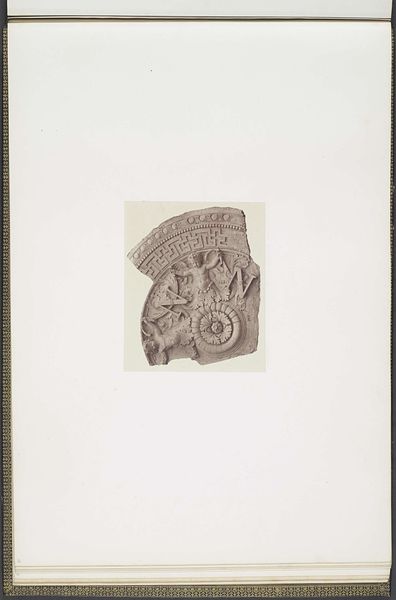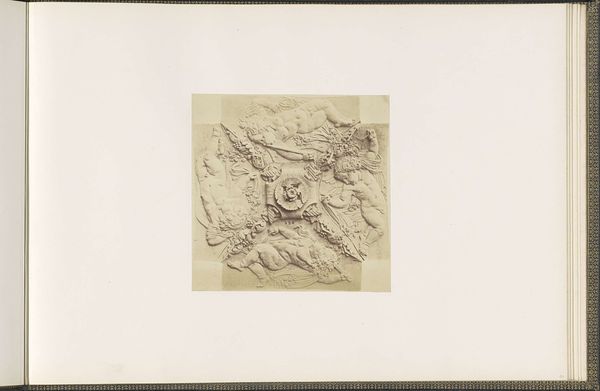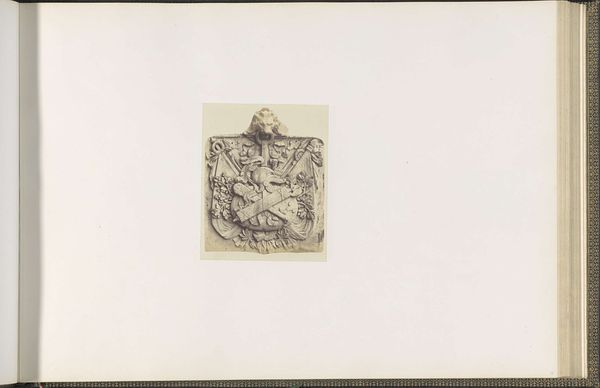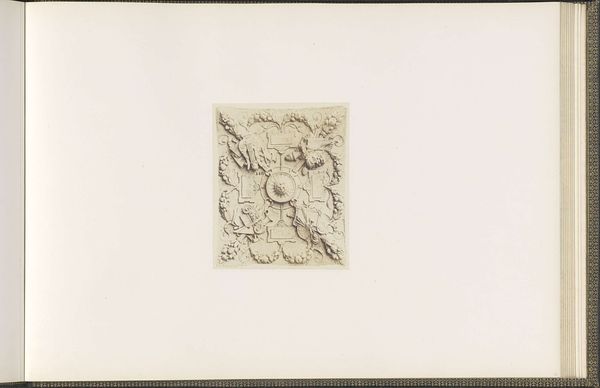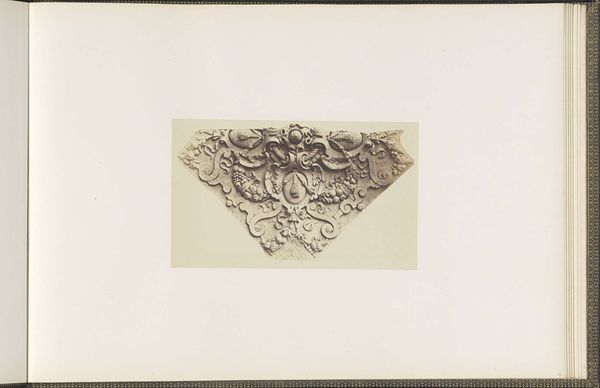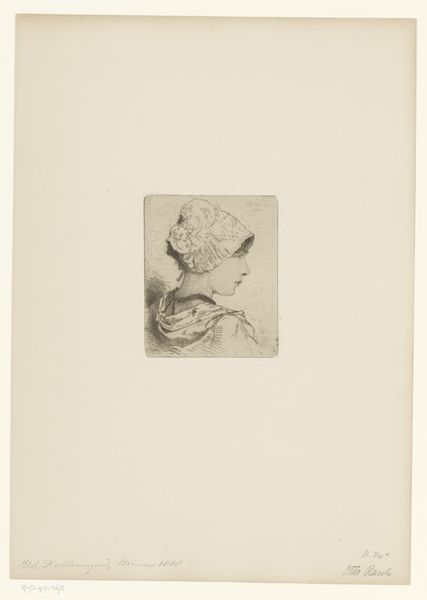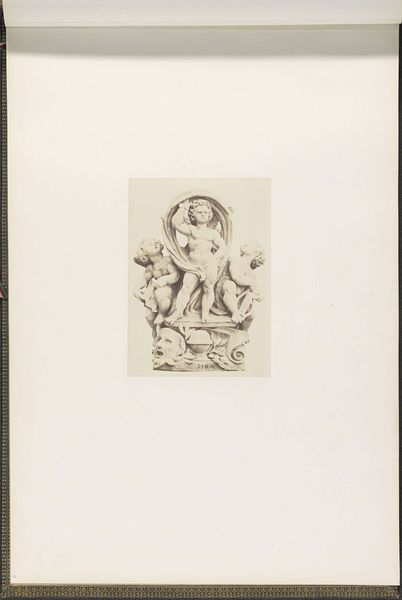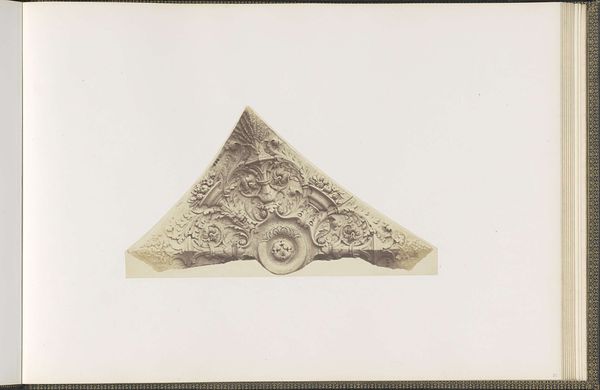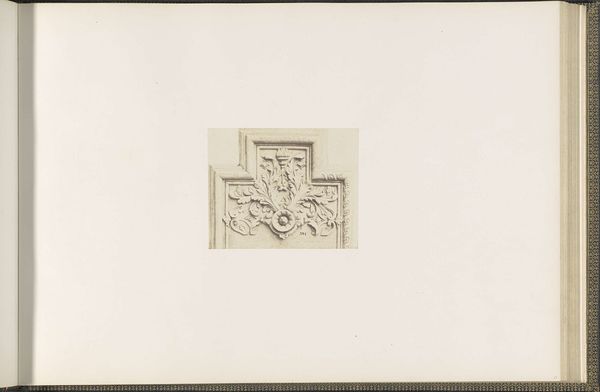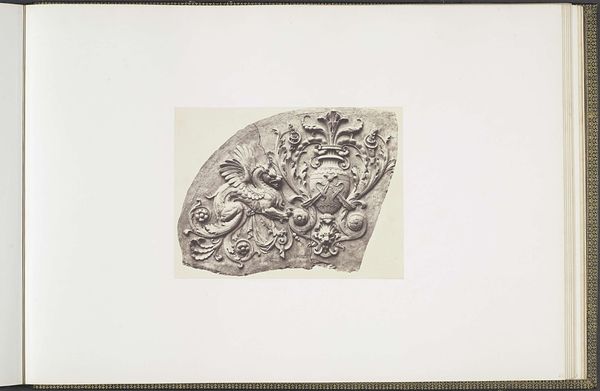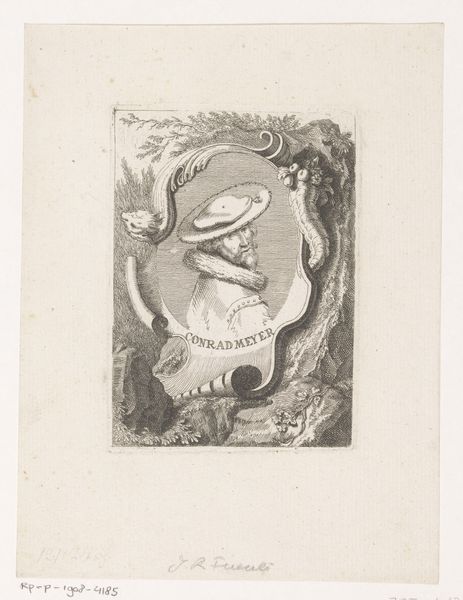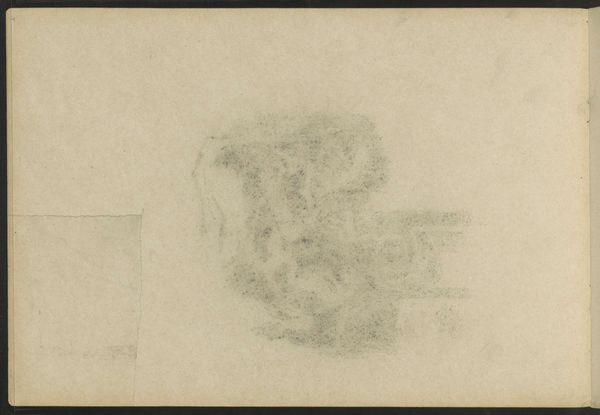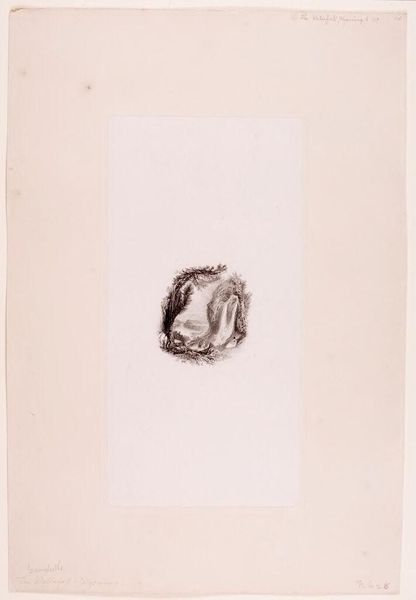
Gipsmodel voor een gewelfversiering van het Palais du Louvre door L. Flandrin c. 1855 - 1857
0:00
0:00
edouardbaldus
Rijksmuseum
print, relief, photography, collotype, plaster
#
neoclacissism
#
ink paper printed
# print
#
pen sketch
#
relief
#
photography
#
collotype
#
plaster
#
academic-art
Dimensions: height 376 mm, width 523 mm
Copyright: Rijks Museum: Open Domain
Editor: So, here we have "Gipsmodel voor een gewelfversiering van het Palais du Louvre door L. Flandrin," a plaster model photographed by Edouard Baldus around 1855-1857, part of the Rijksmuseum collection. It’s a print of what seems to be a fragment of architectural decoration, and it strikes me as quite formal, almost academic. What do you see in this piece? Curator: What immediately catches my eye is the tension between the medium and the motif. We see a plaster model, designed to ornament a grand space within the Louvre, rendered here as a flattened, photographic image. The question arises: what does this layering of reproduction—the model, the photograph, the print—do to our understanding of the symbols themselves? Editor: That's interesting! Can you elaborate on the symbols? Curator: Notice the floral patterns, the shield-like emblem, the overall symmetry. These aren't simply decorative; they speak to Neoclassical ideals of order, reason, and a return to the grandeur of antiquity. The rosette, in particular, resonates through millennia – a symbol of cyclical time, of the cosmos, and of divine radiance. It’s interesting to see these potent symbols flattened and repurposed. Does photography capture the fading of once dominant powers, becoming a mere reproduction of symbols with lost meaning? Editor: So, the photograph itself contributes to the narrative? It makes me think about how we document history and tradition. Curator: Precisely! Baldus's work raises vital questions about cultural memory. What do we retain? What do we discard? How does the act of replication—through photography—alter the original symbolic power? Are we holding on to the form, or the essence? Editor: It’s a little unnerving, that photography seems to distill cultural relevance. This has definitely made me rethink how architectural details reflect historical values. Curator: Indeed. It encourages a deeper reflection on how we imbue images with meaning, and how time transforms those meanings. It is so interesting to learn more!
Comments
No comments
Be the first to comment and join the conversation on the ultimate creative platform.

